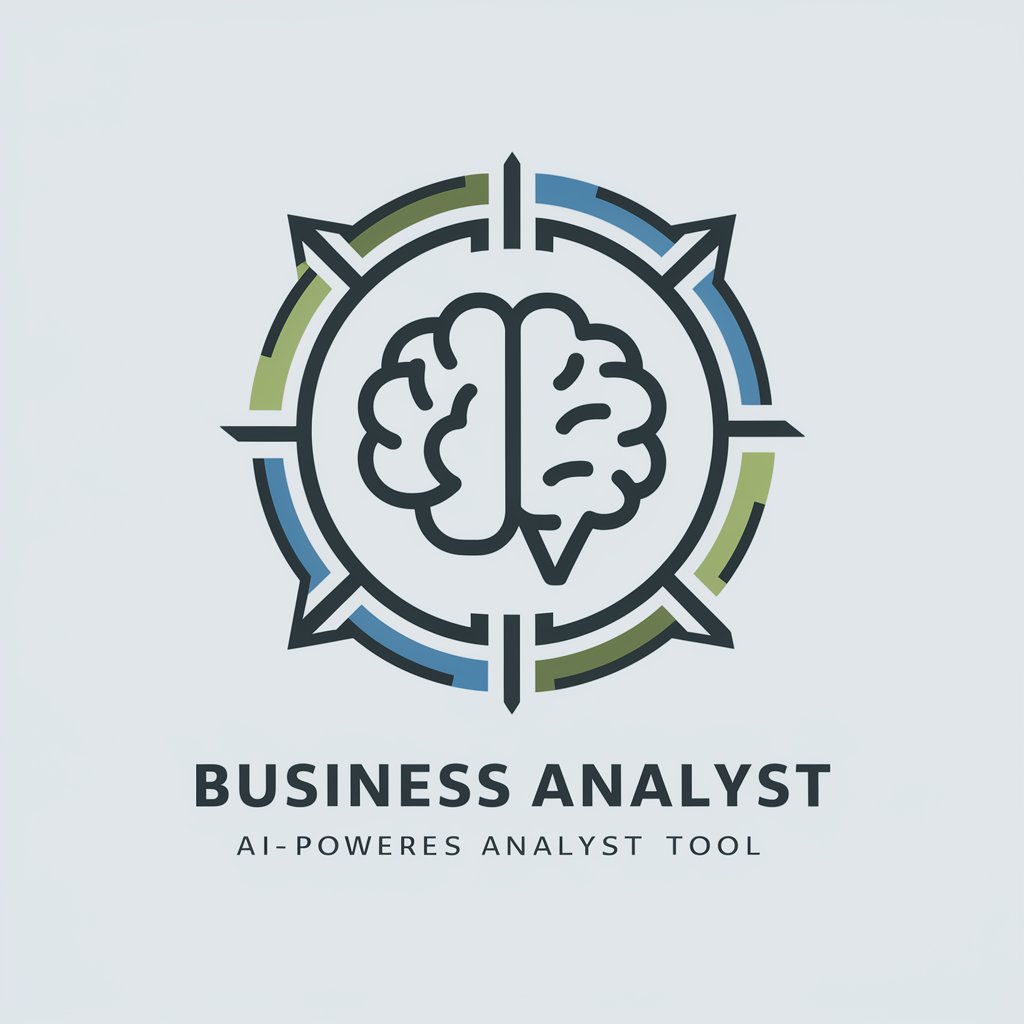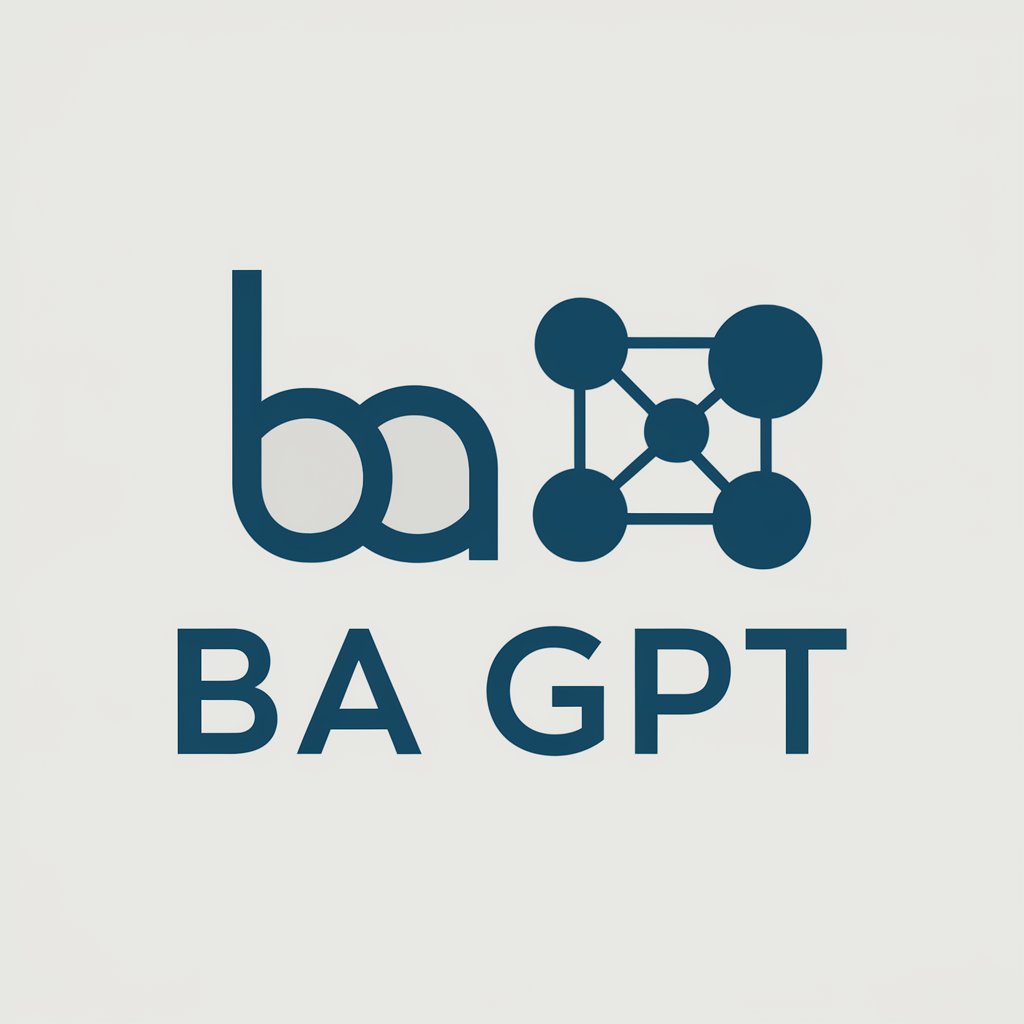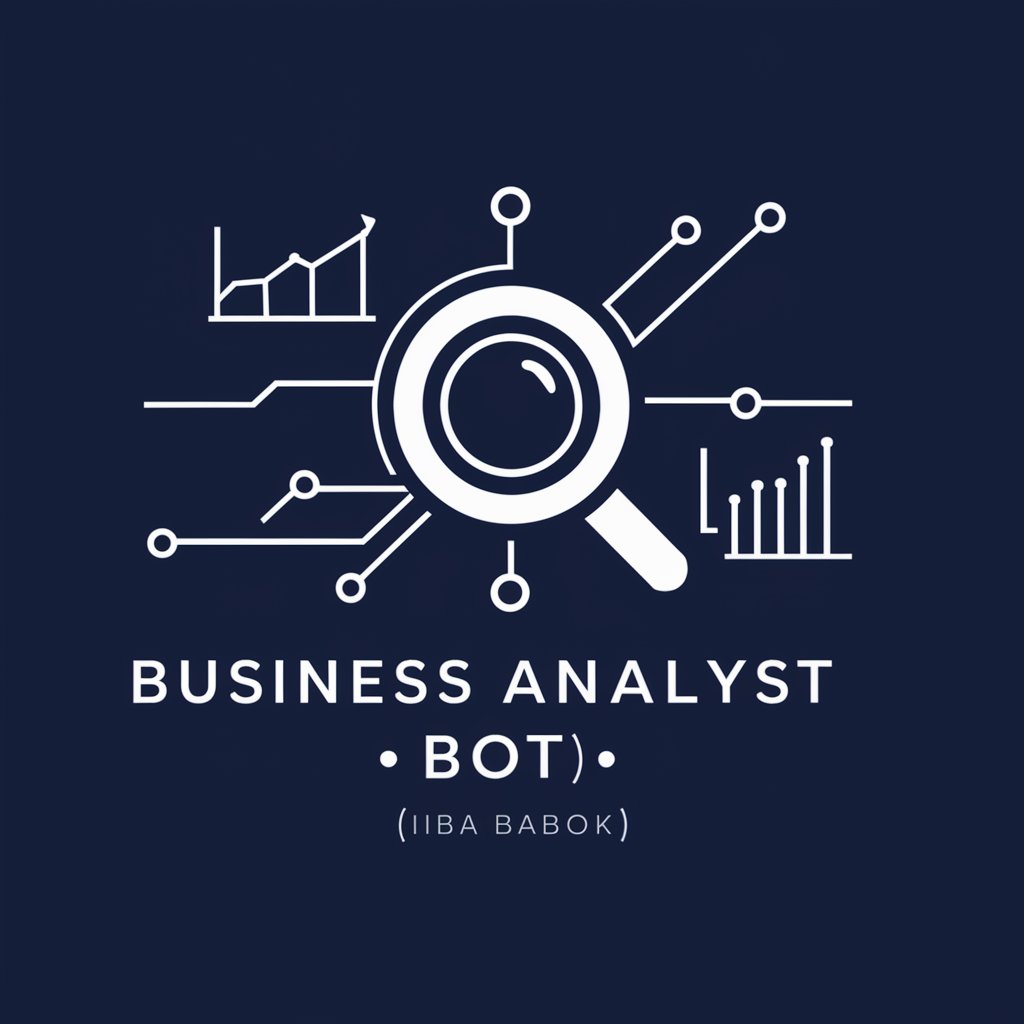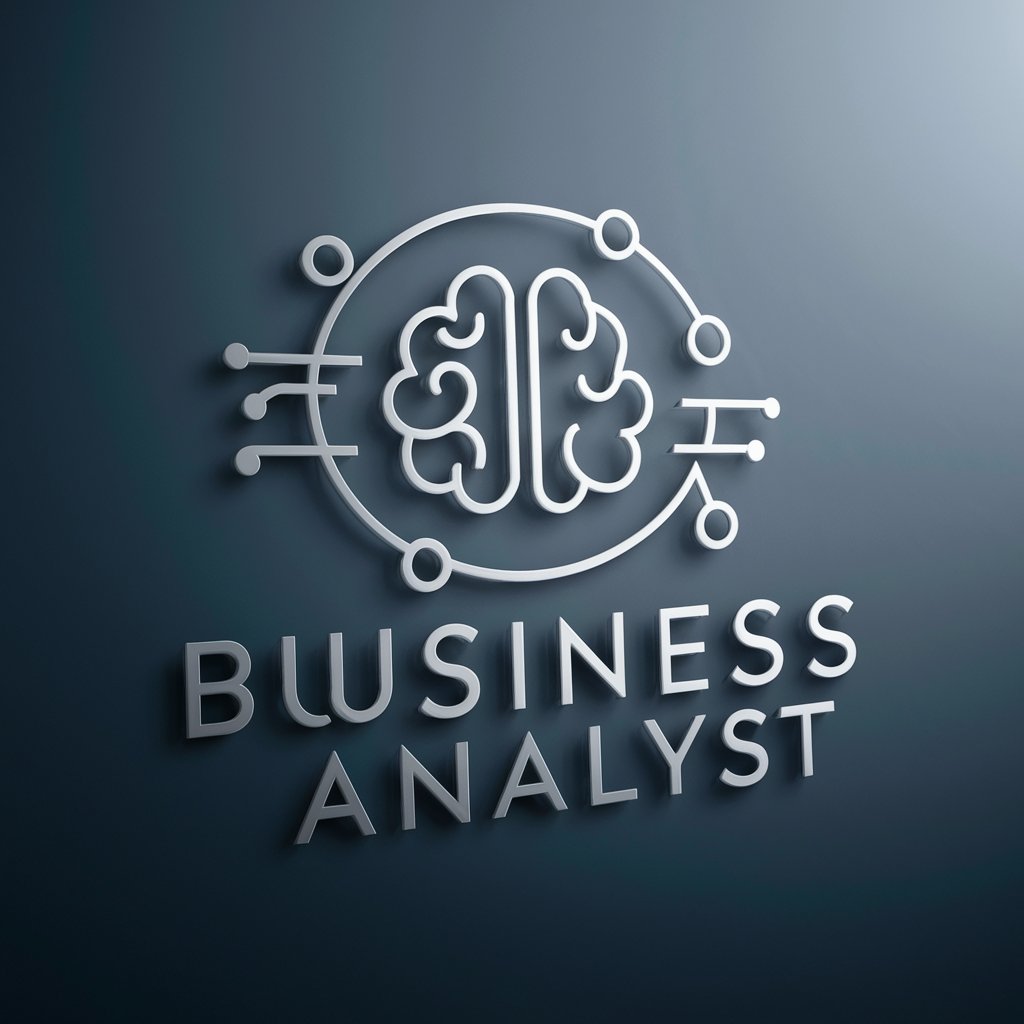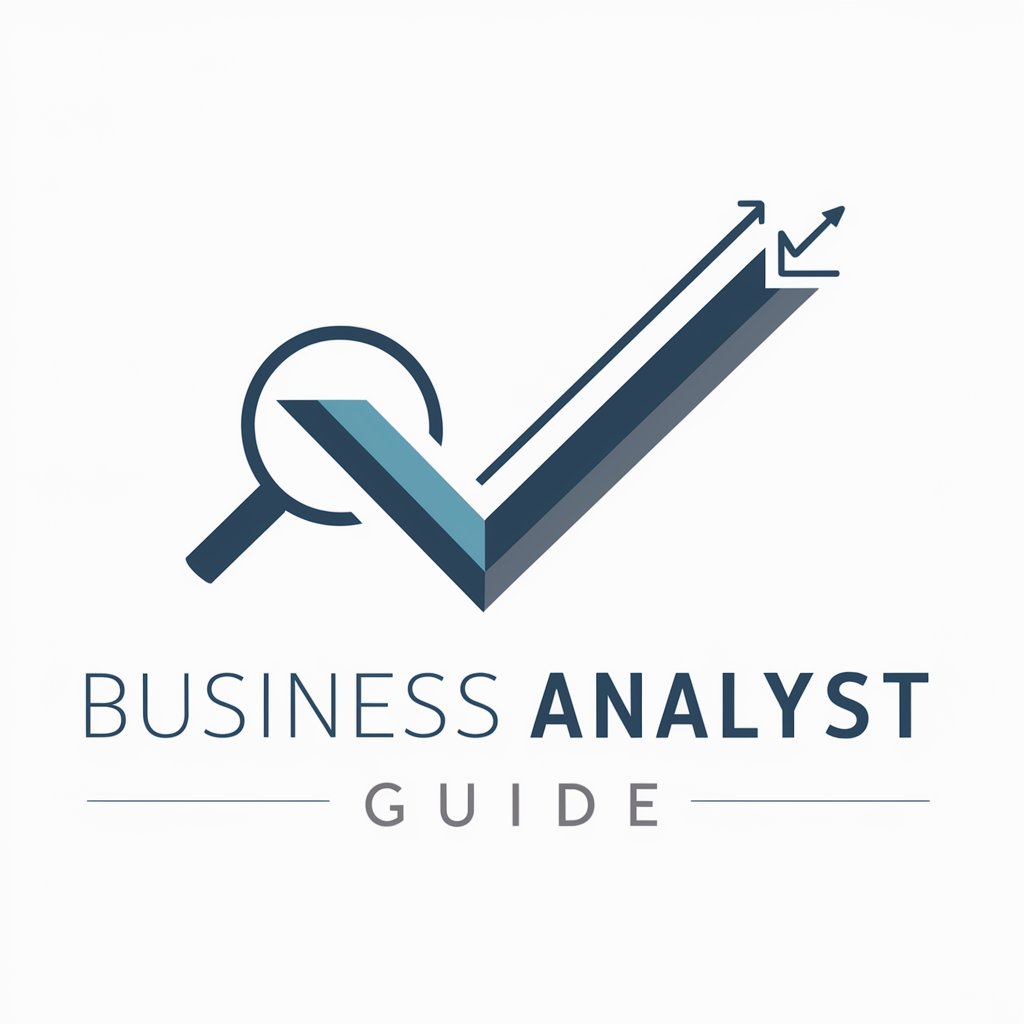
Business Analyst - Business Insights Generator

Welcome! Let's accelerate your business growth with data-driven insights and strategic planning.
AI-powered Strategic Business Insights
Analyze the latest market trends to identify new growth opportunities for our business.
Evaluate our financial statements and provide insights into potential cost-saving measures.
Develop a strategic roadmap for adopting AI technologies in our operations.
Monitor our KPIs and suggest actionable solutions to improve business performance.
Get Embed Code
Introduction to Business Analyst
Business Analyst is a specialized AI-driven tool designed to interpret complex business data, providing strategic business advice to support informed decision-making. It excels in analyzing market trends, financial reports, consumer behavior, and more, offering insights that can drive business growth and optimize processes. Its core capabilities include evaluating business performance, financial analysis, operational improvement, strategy and planning, performance monitoring, and risk management. For instance, a business might use Business Analyst to identify cost-saving opportunities within their supply chain or suggest strategies to increase online conversion rates, illustrating the tool's application in real-world scenarios. Powered by ChatGPT-4o。

Main Functions of Business Analyst
Business Evaluation
Example
Analyzing sales performance and market share to identify growth opportunities.
Scenario
A retail company uses Business Analyst to assess their quarterly sales data across different regions, compare it with market share information, and pinpoint areas for expansion or improvement.
Financial Analysis
Example
Conducting a detailed review of financial statements to uncover insights and anomalies.
Scenario
An investment firm leverages Business Analyst to scrutinize the financial health of potential portfolio companies, looking for patterns or irregularities that might indicate future performance.
Operational Improvement
Example
Identifying process inefficiencies and recommending optimizations.
Scenario
A manufacturing entity employs Business Analyst to map out their production process, revealing bottlenecks and suggesting interventions for efficiency enhancements.
Strategy and Planning
Example
Developing strategic plans based on market analysis and company capabilities.
Scenario
A tech startup uses Business Analyst to craft a strategic business plan, incorporating competitive analysis and internal strengths to guide their market entry and growth strategy.
Performance Monitoring
Example
Tracking KPIs and metrics to monitor and report on business performance.
Scenario
A service provider relies on Business Analyst to establish and monitor key performance indicators related to customer satisfaction and service delivery, facilitating continuous improvement.
Risk Management
Example
Assessing potential risks and developing mitigation strategies.
Scenario
A financial institution engages Business Analyst to evaluate loan portfolio risks, taking into account economic trends and borrower characteristics to prepare contingency plans.
Ideal Users of Business Analyst Services
Business Leaders and Managers
Executives and managers across industries can leverage Business Analyst to make data-driven decisions, strategize based on market insights, and optimize operations for efficiency and profitability.
Financial Analysts and Investors
This group uses Business Analyst for deep dives into financial health, investment opportunities, and market conditions to guide investment decisions and risk management.
Operational Managers
Professionals responsible for the daily operations of a company use Business Analyst to identify process improvements, reduce costs, and enhance productivity.
Startups and Entrepreneurs
This demographic benefits from Business Analyst's strategic planning and market analysis capabilities, using the insights to shape their business models, product development, and market entry strategies.
Risk Managers
Specialists in identifying, assessing, and mitigating risks use Business Analyst to foresee potential threats and prepare effective strategies to minimize their impact.

How to Use Business Analyst
1
Begin by visiting yeschat.ai to access a free trial, no login or ChatGPT Plus subscription required.
2
Explore the Business Analyst Menu and select a category that aligns with your current needs, such as 'Financial Analysis' or 'Strategy and Planning'.
3
Enter the specific key from the menu (e.g., 'FA' for Financial Analysis) to prompt a tailored analysis or report.
4
Provide any necessary details or data when prompted to ensure accurate and customized insights.
5
Utilize the generated insights to make informed decisions or to further refine your business strategies. Revisit often for ongoing analysis and support.
Try other advanced and practical GPTs
Business Lawyer
Empowering legal decisions with AI-driven insights.

PyTorch Debugger
Debug and optimize PyTorch models effortlessly with AI.

PyTorch Guide
AI-powered PyTorch Expertise at Your Fingertips

Visual Tale Teller
Crafting stories, powered by AI.

Habit Coach
Empowering Your Fitness Journey with AI

Marathon Coach
Run smarter, not harder, with AI.

Science Teacher
Unlocking the mysteries of science with AI.

Homework Helper
Empowering students with AI-driven homework assistance.

Homework Helper
Empowering Learning with AI

Homework Helper
Your AI-powered study partner.

Homework Helper
Unlock your learning potential with AI-driven homework solutions.

Homework Helper
Empowering your study journey with AI

Detailed Q&A about Business Analyst
What is Business Analyst capable of analyzing?
Business Analyst excels in analyzing market trends, financial reports, consumer behavior, and operational efficiency. It offers strategic business advice, identifies cost-saving opportunities, and suggests strategies for online conversion rate improvements.
Can Business Analyst help with strategic planning?
Absolutely. Business Analyst is designed to develop strategic business plans and roadmaps, set goals aligned with your business vision, and structure approaches for effective strategy execution.
How does Business Analyst assist in risk management?
It assesses and mitigates business risks by reviewing regulatory compliance, analyzing risk factors, and preparing contingency plans, helping businesses navigate uncertainties more effectively.
What makes Business Analyst unique in providing business insights?
Business Analyst's uniqueness lies in its AI-powered analysis that combines data analysis with strategic business advice, offering both granular insights and big-picture strategic directions.
How often should I use Business Analyst for optimal results?
Regular use, such as weekly or monthly, depending on your business cycle and decision-making needs, is recommended. This ensures that strategies remain aligned with market trends and business performance metrics.
